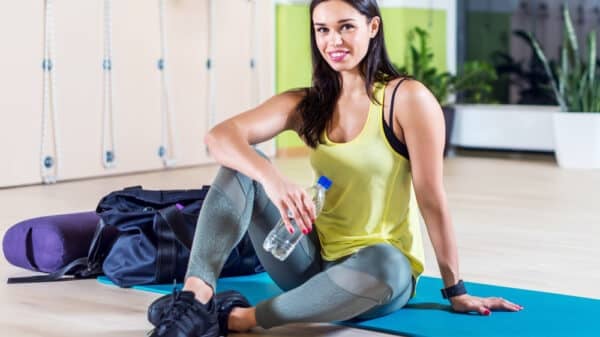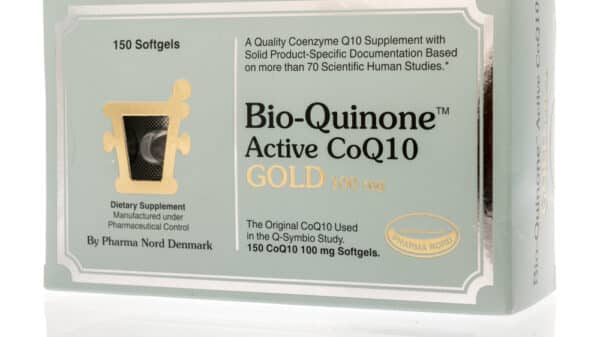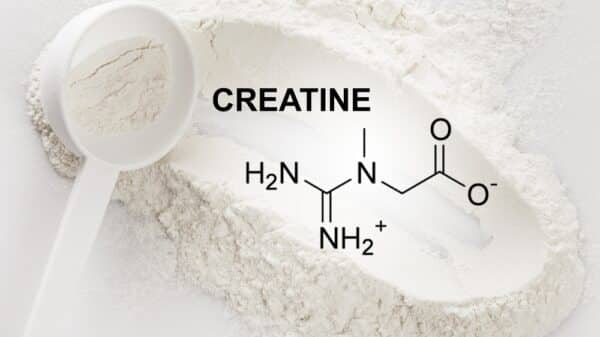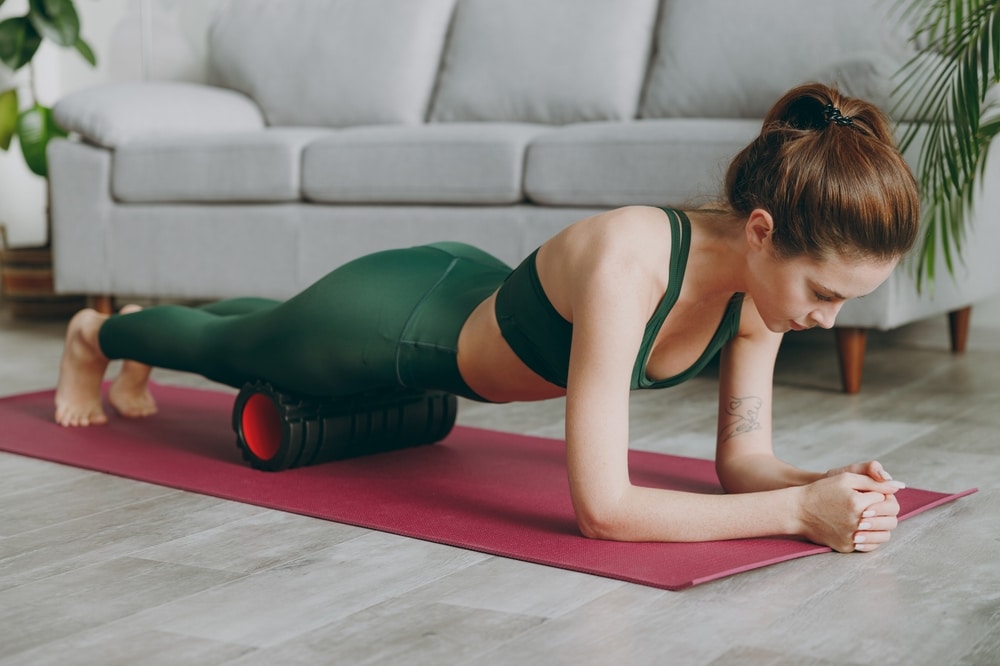Chances are, if you’ve stepped into a gym or browsed fitness equipment, you’ve encountered foam rollers. However, if you’re uncertain about how to effectively use one, you’re not alone. Despite their growing popularity, foam rollers can still be a mystery to many, even seasoned trainers.
Foam roller exercises primarily focus on myofascial release, a self-massage technique designed to alleviate muscle tension, increase flexibility, and promote recovery. These exercises can be performed pre-workout to warm up tight muscles or post-workout to support recovery.
The surge in interest surrounding foam rolling stems from a better understanding of the benefits of self-massage techniques. With the high costs of professional massages, foam rollers offer an accessible alternative that can replicate many therapeutic effects without breaking the bank.
Understanding Foam Rollers
A foam roller is a cylindrical device made of dense foam or other resilient materials, utilized as a self-massage tool targeting muscles, tendons, and fascia. Rolling your body against the foam creates pressure that helps to release tightness and alleviate discomfort.
The Mechanics of Foam Rolling
Myofascial release refers to the process of applying pressure to connective tissue—the fascia—surrounding muscles. The fascia, composed of collagen fibers, binds our muscles, organs, and nerves. When this tissue gets tight or injured, it can restrict movement.
Foam rolling acts as a self-myofascial release (SMR) method, where “myo” indicates muscle and “fascial” signifies the connective tissue. Using a foam roller on tight or sore areas can alleviate restrictions and enhance flexibility and mobility.
How It Works
Applying pressure on specific areas for 20-60 seconds helps neural receptors in the body signal relaxation, reducing tightness in the muscle. This progressive release allows for enhanced movement quality and overall function.
Optimal Timing for Foam Rolling
- Warm-Up: Engaging in foam rolling before workouts can activate muscles, improve flexibility, and decrease stiffness.
- Recovery: Post-exercise foam rolling aids in flushing out lactic acid, helping to minimize soreness and speed up recovery.
- On Rest Days: Utilizing foam rollers during rest days can maintain muscle health and prevent the formation of new adhesions.
Types of Foam Rollers
- Soft/Low Density: Ideal for beginners or particularly tender areas.
- Medium Density: A versatile option suitable for general use.
- Firm/High Density: Designed for experienced users seeking deeper pressure.
- Textured Rollers: Perfect for simulating massage techniques through their design.
- Length Options: Choose between shorter, portable rollers or longer ones that accommodate the entire spine.
Safety Precautions
- Avoid rolling over bony areas, joints, or inflamed tissues.
- Limit pressure on particularly sensitive areas to 30-60 seconds.
- Exercise care when targeting the lower back; consider rolling adjacent regions instead.
- Consult a healthcare provider before foam rolling if recovering from an injury.
Exploring the Benefits of Foam Rolling
Integrating foam roller exercises into your routine can yield numerous health advantages, whether you’re an athlete, a fitness fanatic, or simply looking to ease muscle tension.
1. Enhanced Flexibility and Range of Motion
Previously, stretching was the go-to method for alleviating muscle tightness. Current research indicates foam rolling can also effectively improve flexibility by releasing areas of tightness in the fascia, aiding mobility both during workouts and daily activities.
2. Improved Circulation
Good blood circulation is essential for overall health. Myofascial release from foam rolling encourages blood flow, helping deliver oxygen and nutrients to tissues, which can enhance recovery and overall tissue health.
3. Reduced Stress
Foam rolling can mitigate stress levels after workouts. Studies show that it helps lower cortisol—often referred to as the stress hormone—allowing for a calmer post-exercise state.
4. Alleviation of Muscle Soreness
Delayed onset muscle soreness (DOMS) is something many athletes encounter post-exercise. Research indicates that foam rolling can significantly reduce DOMS symptoms, helping you recover faster between workouts.
5. Injury Prevention
By maintaining muscle flexibility and addressing tight areas with foam roller exercises, you can decrease the risk of injuries often associated with overuse and tightness, such as these commonly found in runners.
6. Decreased Chronic Tension and Pain
Chronic tension often stems from tight muscles or alignment imbalances. Regular foam rolling can alleviate discomfort and stiffness in problematic areas, encouraging a more relaxed state.
7. Versatility and Affordability
Foam rollers are cost-effective, portable, and user-friendly. Just a few minutes of rolling on targeted muscle groups can enhance both warm-ups and recovery practices.
Effective Foam Roller Exercises
Now that you grasp the concepts surrounding foam rolling, let’s delve into how to incorporate specific foam roller exercises into your fitness routine. Spending about a minute on each muscle group allows adequate relaxation and tension release. Keep breathing deeply as you roll.
Hamstrings and Glutes
Many individuals struggle with tight hamstrings due to prolonged sitting. To alleviate this, sit on the floor with the foam roller positioned under your legs. Support your weight with your arms, gradually shifting more pressure to your legs as you roll from your glutes down toward your knees.
Quadriceps
The front of your thighs often carries tension as well. For this exercise, lie facedown and place the foam roller under your thighs. Using your forearms for balance, roll from your knees to your hips while keeping your core engaged.
Iliotibial (IT) Band
To target the IT band, position your body so one leg lies on the foam roller. Roll slowly from just below your hip to your knee, using your arms to manage pressure and maintain balance.
Upper Back
Foam rolling can also address upper back tightness. Position the foam roller horizontally against your upper back and roll gently from the shoulder blades to the mid-back, maintaining a lift with your hips.
Precautions to Keep in Mind
As with any new fitness routine, start gradually with foam rolling, increasing frequency as your comfort level grows. A couple of times a week is a sensible starting point, with the option to incorporate foam rolling during downtime, such as commercial breaks on TV.
Avoid common pitfalls like rolling too fast or spending excessive time on sore spots. Rushing through foam rolling sessions removes the benefits, as muscles need time to adjust and release adhesions.
Ignore the widespread ‘no pain, no gain’ mentality. Excessive pressure can lead to bruising or injury, so focus on moderate pressure that fosters relaxation without causing pain.
Furthermore, those with osteoporosis or who are pregnant should consult healthcare professionals prior to foam rolling. Bone fragility increases the risk of injury, while pregnancy can shift bodily alignment, making foam rolling potentially harmful if performed incorrectly.
Frequently Asked Questions
Is foam rolling safe for everyone?
While generally safe for most individuals, avoid foam rolling on bruised, inflamed, or injured areas. If you have certain chronic conditions, consult a physician before using a foam roller.
How often should I do foam roller exercises?
Most people benefit from foam rolling three to five times a week, focusing on key muscle areas. Daily sessions of 5 to 15 minutes can also enhance results.
How long should I foam roll each muscle group?
A standard guideline is to roll each muscle for 30-60 seconds, while some research suggests extending to 90-120 seconds for improved results.
Does foam rolling help with soreness (DOMS)?
Yes, various athletes report that foam rolling significantly reduces soreness, attributed to better circulation and release of muscle tension.
Should I foam roll before or after workouts?
Both options are beneficial—foam rolling prior loosens muscles and enhances mobility, while post-exercise rolling aids recovery and minimizes rigidity.
Why do my legs feel sore after foam rolling?
This discomfort may occur if too much pressure is applied or if your muscles are tight. Adjust your technique, applying gentle pressure and gradually increasing intensity.
Can I foam roll every day?
Yes, as long as mindful and moderate practices are adhered to. Allow your muscles adequate recovery time and listen to your body.
How hard should foam rolling feel?
You should feel firm pressure in tight spots without experiencing severe pain. Use relaxation techniques to manage discomfort.
Can foam roller exercises improve posture?
Indirectly, yes. Foam rolling can release tightness in key areas, helping to restore balance and alignment in your body, leading to better posture over time.
































